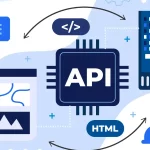
Hyper-Personalization: Elevating Content Marketing in the Digital Era
- Post
- August 8, 2023
- Content Marketing, SEO & Digital Marketing, Web Technologies
- 0 Comments
In today’s rapidly evolving digital landscape, staying ahead of the curve is crucial for businesses looking to make their mark. One of the most groundbreaking strategies in the realm of content marketing is hyper-personalization. This cutting-edge approach is revolutionizing the way brands engage with their audience, tailoring content to individual preferences and behaviors. In this comprehensive guide, we delve into the depths of hyper-personalization, unveiling its profound impact on content marketing strategy, particularly in the B2B landscape. Prepare to discover how hyper-personalization is reshaping the content marketing world with real-life examples that highlight its potential.
The Essence of Hyper-Personalization
At its core, hyper-personalization goes beyond segmentation. It involves analyzing a user’s behavior, preferences, and history to create content that resonates deeply. This strategy acknowledges that each consumer is unique, necessitating a customized approach. Research by Accenture revealed that 91% of consumers prefer brands that provide relevant offers and recommendations, highlighting the significance of personalization in today’s cluttered digital space.
Crafting Personalized Experiences
Hyper-personalization involves crafting tailored experiences that make users feel understood and valued. Utilizing AI and machine learning, brands can analyze data points to predict user preferences. Amazon, for instance, employs this strategy by showcasing products based on browsing history and previous purchases. This level of personalization creates a seamless and enjoyable experience that enhances customer loyalty.
Hyper-Personalization in B2B Content Marketing
While often associated with B2C marketing, hyper-personalization is gaining traction in the B2B arena as well. With longer sales cycles and complex decision-making processes, B2B brands are leveraging hyper-personalization to nurture leads effectively. By delivering content that addresses specific pain points and challenges faced by businesses, B2B marketers can establish authority and build trust.
Real-Life Success Stories
Numerous brands have harnessed hyper-personalization to achieve remarkable results. Netflix’s recommendation engine, driven by sophisticated algorithms, analyzes user viewing patterns to suggest tailored content. This approach has led to a significant increase in user engagement and retention. Similarly, Spotify’s personalized playlists, curated based on music preferences, have transformed the way users discover and enjoy music.
The Data Dilemma and Privacy Concerns
While hyper-personalization holds immense potential, it also raises questions about data privacy and security. Striking the right balance between personalization and user consent is paramount. Regulations like GDPR have highlighted the need for transparent data practices. Brands must prioritize ethical data collection and usage to ensure consumer trust isn’t compromised.
Implementing Hyper-Personalization: Steps to Success
To embark on a successful hyper-personalization journey, brands must follow a strategic approach:
Data Collection:
Gather relevant user data while respecting privacy regulations.
Segmentation and Analysis:
Group users based on common traits and behaviors.
Content Mapping:
Align content with each segment’s preferences and pain points.
Dynamic Content Delivery:
Utilize AI-driven tools to serve content in real-time based on user interactions.
Continuous Optimization:
Regularly refine and improve strategies based on performance metrics.
Final Words
In a world inundated with content, hyper-personalization emerges as a game-changer, offering brands a competitive edge by delivering content that resonates on a personal level. The marriage of data, technology, and creativity paves the way for meaningful interactions, fostering brand loyalty and driving tangible results. As the digital landscape continues to evolve, embracing hyper-personalization is not just an option but a necessity for businesses seeking to thrive.
Commonly Asked Questions
Q1: Can hyper-personalization work for small businesses?
A1: Absolutely. Hyper-personalization can be scaled to suit businesses of all sizes, allowing small businesses to engage customers on a more personal level and compete effectively.
Q2: How can I ensure data privacy while implementing hyper-personalization?
A2: Prioritize transparent data practices, obtain user consent, and adhere to relevant data protection regulations to maintain user trust.
Q3: Is hyper-personalization limited to content marketing?
A3: No, hyper-personalization can be applied across various marketing channels, including email marketing, product recommendations, and more.
Q4: What tools are essential for hyper-personalization?
A4: AI-driven analytics tools, customer relationship management (CRM) systems, and marketing automation platforms are crucial for effective hyper-personalization.
Q5: Can hyper-personalization lead to information filter bubbles?
A5: While hyper-personalization can result in tailored content, brands should strive to strike a balance and introduce users to diverse perspectives to avoid information filter bubbles.




